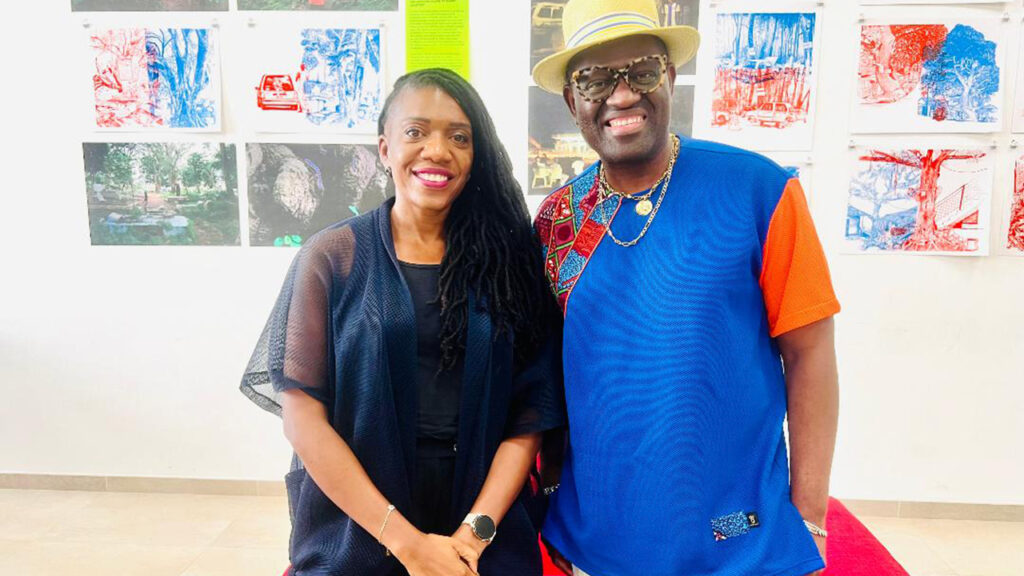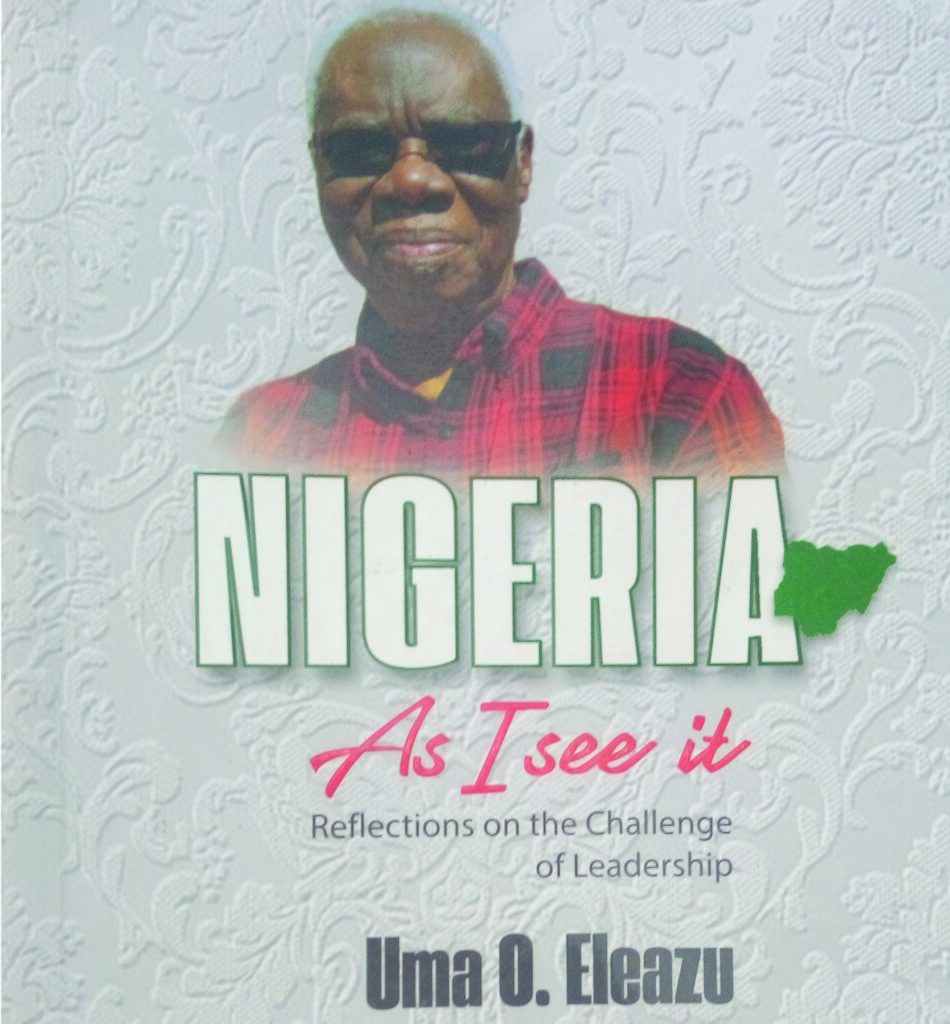
• Honours The Late Artist With Museum, Deepens Study Of Master Carver
• Plans To Turn Ise To A Tourism Haven
• Ojudu, Shyllon, Okundaye, Wale Ojo-Lanre, Others In Board of Trustees Of Olowe Of Ise Arts Foundation
An over-wrought emotion filled the air this Wednesday afternoon. The air was windy and dusty from the road construction on that axis of Ekiti State: Ado-Ikere-Ise. The harmattan wind tickled trees lined on the road, hugging their leaves tight, as it whistled past.
On Ofingba Street, Ise-Ekiti, there was a cacophony of honking horns and buzzing motorcycles. A palpable excitement filled the air, as residents trooped out to welcome guests into this cluster of mud houses.
Walled by a shade of sadness and blush of shame, the buildings were in derelict condition. There was a glimpse in paradox, as the houses did not reflect great art work produced in the place. They looked abandoned. Their earthen colour had faded: The houses, 11 in all, which bore witness to history, will soon give way to civilisation.
With a mixture of surprise and astonishment, one of the houses provided shelter for the late master carver, Olowe Ajalemo, popularly known as Olowe of Ise. That was where the sculptor to kings listened to sound of axes chopping wood. He waxed lyrics for Ogun with his woods. And most of his dialogues with woods were at the back of his house, where his sharpening stone, over a century now, was.
One of the buildings was where he was buried: The house his father built. It is believed in Africa that great men, like Olowe, were not supposed to be buried in their houses so that their power did not die with them.
Residents had gathered by a slab where the late sculptor worshipped Ogun, the god of iron. Ogun was his creative muse and he made sacrifices on that slab to appease his ancestors who handed the craft over from generation to generation.
As an Ogun priest, Olowe had a room, which no one entered except during the Ogun Festival. A couple of days earlier before the journey to immortalise Olowe began, nine dogs were slaughtered to propitiate Ogun on that slab. A few of his works left in family custody were on display that day and won’t be available again until next year.
Everybody was expecting the commissioning of Olowe museum. News had gone round about plans by the Ekiti State Governor, Mr. Biodun Oyebanji, to immortalise the late master carver and sculptor to kings, by transforming his home into a museum – The Olowe of Ise Museum – to serve “as a testament to the remarkable craftsmanship, artistry, and cultural significance of the world-renowned carver.”
In time past, Ise was known for its art. Olowe was one of the artists who made the town brim with talents. Today, that fame has left the town and only a few people know much about Olowe and his art.
In spite of the honours abroad, he has had no mention in high circles in his town, in his state of origin, or in his country. Between March 15, 1998 and September 7, 1998, the National Museum of African Art staged an exhibition of 35 major works by Olowe and was titled: Olowe of Ise: A Yoruba Sculptor to Kings. Objects at the show included, a palace door and bowl with figures, shrine figures, veranda pillars, toys, containers, and a mask.
“An artist of universal appeal, Olowe of Ise was unique among Yoruba artists and remains without peer,” wrote National Museum of African Art (NMAfA) director, Roslyn A. Walker, in the catalogue of the show.
Paul Richard had written in Washington Post after visiting the show’s opening, “this important exhibition has given to Olowe, alone among that company, an international retrospective, a volume for the library, a story and a name.”
Though African works of art such as the Benin Bronzes and Bronze Head from Ife head have been traditionally identified by the name of the ethnic group that produced them or by a particular style of art, the individual artists who created them were anonymous. However, Olowe defied this anonymity.

As early as 1924, his carving (a door and lintel ensemble from the royal palace at Ikere) was exhibited at the Nigerian Pavilion, British Empire Exhibition, Wembley, London. This work of art was subsequently acquired by the British Museum.
Unto Ise, A King Is Born
BORN in 1873, Olowe of Ise was a wood sculptor and master innovator in the African style of design known as Oju-ona.Olowe, originally Olowere, was born in Efon-Alaiye, a town known as a major cultural centre in Yorubaland, but he lived most of his life in Ise. He was initially employed as a messenger at the court of King Arinjale, the Oba of Ise.
His post was elemoso, royal messenger or page. Hundreds of such servants — most of whom were slaves, hostages, captives or else their descendants — worked within the palace. Olowe, like the others, had the right half of his head shaved to show his lowly rank.
Nobody remembered how he started to make sculpture, but his gifts were soon apparent. His style was distinct such that his works were unique from other palace carvers. Other palace woodworkers carved their reliefs shallowly. Olowe, in contrast, cut his figures deeply, and put them into motion.
The figures he depicted — the pecking birds, the servants, the Englishmen in litters, the bearded kings on horseback — seemed to turn in space. The allegorical presentations of Olowe’s works often embodied and accentuated the wealth and power of the rulers who commissioned the work. Though the themes of his carving were established by patrons with strict traditions, he was permitted to experiment with styles and forms.
He strove to convey his emotional and spiritual state in each of his carvings, which were densely laden with philosophy and provided a direct sense of how the artist viewed each scene, interpreted through his eyes, mind, and heart.
Loved by kings and revered by warriors, Olowe’s fame spread among kingdoms and he was conferred the title of ‘master sculptor’ by his contemporaries.
Sadly, after his death in 1938, no one in his community cared to preserve his works for posterity. Some years after his passing, the British Museum’s William Fagg journeyed to Ise, Ikere, Ilesa and Idanre to see Olowe’s works in situ.
Unfortunately, he found some lying around abandoned in courtyards, deteriorated by rain and wrecked by insects while some were in fair condition and needed to be polished.
To keep Olowe’s work alive, Fagg took a picture of the items he found, penned articles about them. After Fagg’s commentary on Olowe’s life and works, other scholars travelled to Ise and other communities Olowe worked in, to document his life and work.
In 1964, the Englishman John Picton travelled to Ise and Ikere to document Olowe’s artistic life. Years later, in 1988, the American professor, anthropologist and author, John Pemberton III, also travelled down to Ise and Ikere to explore Olowe’s works.
However, renewed interest on the master carver is being spearheaded by Senator Babafemi Ojudu, a collector, journalist and politician. Ojudu, speaking with The Guardian in his Ado Ekiti country home, said: “I first encountered Olowe of Ise about 15 years ago. An American friend of mine, Kathleen Mead, who works at the Smithsonian Institute in Washington, DC, invited me to visit. She said she had a surprise for me. I arrived at the vast premises, and she led me to this fairly big space housing the works of Baba Olowe, also known as Olowe Ise. ‘Meet your statesman and his body of work’, she said to me. My mouth was agape. I went around, looked at the works, and sought out Olowe’s profile.”
Surprisingly, “no museum in my state, and neither in the whole of Nigeria, houses any of his works. His work and style of carving are not taught in our schools, but here we are in another man’s country, and they are putting high value on the work of the unlettered carver, celebrated all over the art world and studied in most of the reputable art schools for his unique style of carving,” Ojudu said.
What pained Ojudu was the assertion in the Western media that there was no living descendant of the Olowe family, which he knew was not true. He was even angered by the fact that people around could not properly represent the image of the family.
“I sought and got in touch with the Olowes and after several rebuff, I was able to make headway,” he said. He wrote a series of articles and stories on need to immoralise the sculptor to kings. He wrote a proposal to the Ekiti State government, which was adopted by Governor Oyebanji.
In December, the Governor, accompanied by Ojudu; the Arinjale of Ise, Oba Adetunji Ajayi and other prominent leaders, led a visit to the home of Olowe, where government promised to build a museum in his name. The governor had noted all Olowe’s works from abroad would be retrieved and deposited to attract tourists and investors across the world.
“This project is going to sell our state, it is going to put our state and Ise-Ekiti on the map of the world, because the man we are celebrating was unlettered and he didn’t go to any school, but his works are everywhere in the world,” Governor Oyebanji retorted at the visit.
“We are having a museum here and hopefully we have a bigger one in Ado-Ekiti where all his works will be displayed. It is going to be the beginning of great things in the state.”
Responding, Oba Ajayi, who hailed the efforts of Governor Oyebanji and Senator Ojudu for “their interest in showcasing the late carver to the world,” added that the community would constitute a committee to support the initiative, saying, “it is going to be a landmark in the history of the community.”
Inauguration Of Olowe Arts Foundation
ON Wednesday, January 17, Governor Biodun Oyebanji inaugurated the Board of Trustees of Olowe of Ise Arts Foundation. The foundation aims to honour legacy of the late Olowe and promote appreciation of Nigerian art and culture.
The Board, which has as members those who share a passion for art and cultural preservation, will be responsible for guiding the foundation’s activities, ensuring its sustainable growth, and bringing recognition to the works of the late Olowe.
Members of the Board include Senator Babafemi Ojudu – Chair, Omooba Yemisi Shyllon, Chief Nike Okundaye, Senator Olubunmi Adetunmbi, Mr Akin Oyebode, Mr Wale Ojo-Lanre, Dr Mike Adeoye, Mrs Abiola Adelana, Prince Tunde Odunlade, Prof. Lawrence Kolawole, Mr Ologbon Olowe and Mr O A Olayinka.
According to Ojudu, “the museum, under the stewardship of the foundation, is poised to serve as a testament to the remarkable craftsmanship, artistry, and cultural significance of the world-renowned carver: A true custodian of Yoruba artistic excellence, Olowe of Ise’s masterpieces reflect the depth of our cultural heritage, the finesse of Yoruba art, and the ingenuity of our ancestors.”
He said establishment of the museum is not simply an act of preservation, “it is a steadfast commitment to safeguarding our heritage, celebrating our artistic contributions, and presenting an enduring legacy for future generations. With the inauguration of the Board of Trustees, we are laying the foundation for this noble endeavour and calling upon you to serve as the guiding force in upholding the mission and vision of the Olowe of Ise Art Foundation.”
He said: “I have the utmost confidence in the competence, dedication, and unwavering commitment of the esteemed trustees appointed to oversee this monumental task. Your collective expertise, foresight, and passion for our cultural heritage will undoubtedly steer the foundation towards sustained success and global recognition. I thank you all for accepting to give of your knowledge, experience, and time.
For the scion of Olowe family, Olajide Ologbon, an HND holder in banking and finance from the Federal Polytechnic, Offa, it is indeed a great honour done to the family after several people had morally and physically defrauded them.
Just before he met Ojudu, his long-held dream of getting back some of the carvings of his father had fizzled out.
“Senator Ojudu was the seventh person to come to me on my grandfather, Olowe,” he told The Guardian.The reception he gave the Senator was cold, because he never believed anyone was ready to help the family to recover the stolen artefacts or even do anything to immortalise his name.
“But after interaction, I was impressed by his effort and the involvement of the state government,” he noted. The deprivation the family has suffered even made his grandmother to stop his father from carving.
He continued, “when my father, High Chief Matthew Ogundele Olowe, who is the only son of his mother, started showing signs of being a sculptor, his mother stopped him from continuing. She told him, ‘all the carving that your father did, what did it bring to him other than poverty?’ Painfully, he stopped. Today, nobody in the family can carve or sculpt, the best I can do is to carve a walking stick.”
But beyond carving walking stick and being an Ogun priest, Ologbon said he inherited his grandfather’s wisdom. “My grandmother used to tell me when she was alive that I used to reason and talk the way her husband did. The name Ologbon was given to me by my grandmother,” he revealed. “The decision of Ekiti State government has brought to me a lot of respect and honour in the community. Though none of the atefacts have been brought home, people who never said hello to me now do so.”
For Ologbon Olowe, the beauty of being a priest lies in the respect that it commands. “Being an Ogun Priest has brought its own prestige, integrity and value to me. You cannot be a priest in the community and be messing around or doing what others are doing.”
He added, “even when young ones are quarrelling in the community, they come to me to report matters. There was a time when there was crisis in the community, between the youth and the mobile police which led to the burning of the police station in the community, I would have been involved.”
According to the Director-General of Ekiti State Bureau of Tourism Development, and member of the Board of Trustees of the Olowe of Ise Arts Foundation, Wale Ojo-Lanre, “this museum will serve as a sanctuary where the treasures of our cultural heritage will be preserved, cherished, and shared with the world, for generations to come.”
For him, the museum will be celebrating cultural heritage— It will be used to inspire and explore the connections between the artwork and the local heritage. Through collective artistic endeavours involving local objects, songs, stories and traditions, participants create their own artwork, showcasing their skills and expanding its representative value.
He said: “The significance of this event extends beyond the realms of art and culture. Cultural tourism plays a pivotal role in the advancement of our state, as it brings economic growth, fosters cross-cultural exchange, and enhances the overall well-being of our communities. The Olowe of Ise Arts Foundation, under the guidance of the Board of Trustees, holds the key to unlocking the immense potential of cultural tourism in Ekiti State, bridging the past with the present, and paving the way for a prosperous future.”
According to the DG, “with their collective wisdom and expertise, the Board of Trustees will lead the way in preserving the legacy of Olowe of Ise, nurturing artistic talent, and crafting an environment that supports and encourages the growth of our cultural heritage. Through their efforts, we will showcase the rich tapestry of our history, inspiring both locals and visitors alike to appreciate and celebrate the immense beauty and significance of our cultural identity.”











